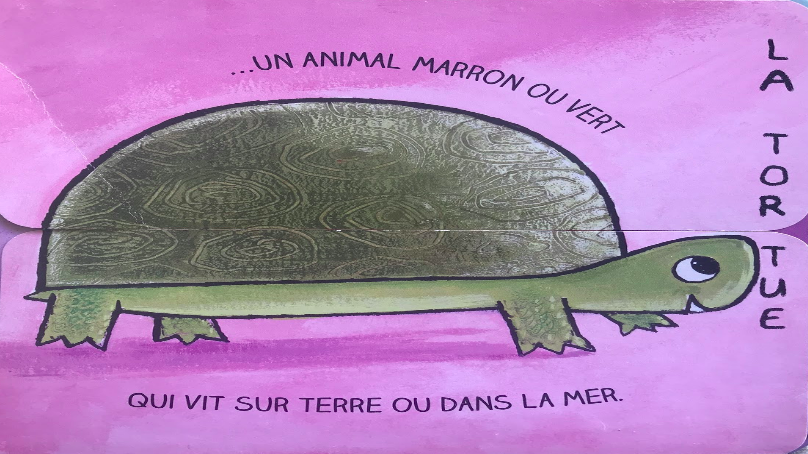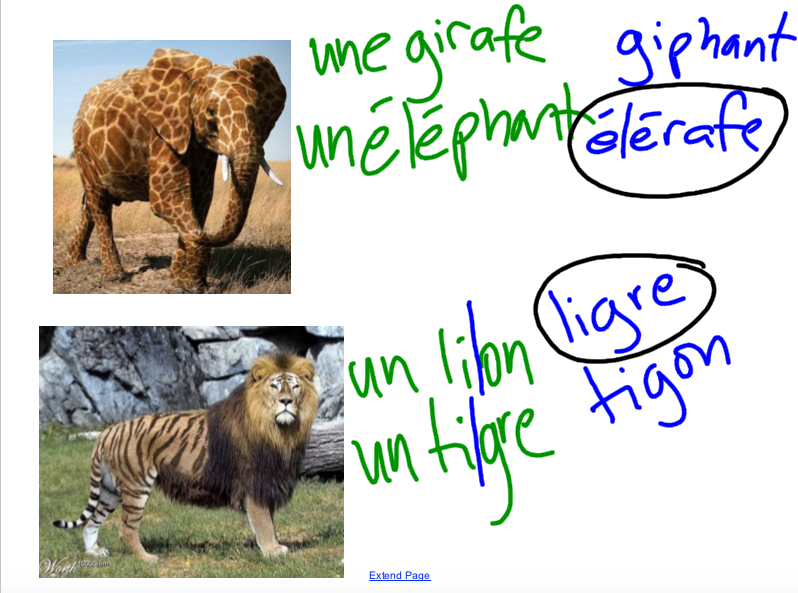|
All kids love animals, right?! What happens when you put two animals together to make a strange hybrid? You get creatures like un rangarou, un tortagon or un kangoudile ! Inspired by the books Le Cochien and Le Chapin, I created a unit that had some very interesting and unanticipated benefits. In addition to students having a fantastic opportunity to be creative and imaginative, we worked on some phonetic and linguistic elements of the French language. I did this with third grade, and I think it's a great age to begin to explore and understand the connection between written and spoken French. I happened upon the two books Le Cochien and Le Chapin at a bookstore in France several years ago. They made me laugh, so I figured my students would like them as well. It is a simple "flip-the-flap" book featuring animals where the split in the pages is horizontal in the middle of the page so the bottom or top can be flipped to change the top or bottom of the animal. (This is hard to describe, does it make any sense?!) In the photos below, the top left is one page, the top right is what you see when you flip both halves of the page open, and then the bottom two are what is visible when only have of the page is flipped open. The illustrations in this book are really well done, and the kids get a kick out of the composite animals. After I read the books to the students, I showed them some photos of other strange animal fusions. (I'm convinced that if people were to look at my Google search history, they would question my sanity!) We spent some time in class talking about the animals featured in these photos and then decided what we should call these creatures. This was where things took an interesting turn. It was fascinating to see which students were able to divide the words into syllables quickly and easily; after working with a few of the combinations, I asked students what they noticed about syllables in French words (they end in vowel sounds). This then made it easier for students to split the words and create the hybrid names. Some students were able to make the connections when we were reading the chapin/cochien books, but looking at more photos was not also fun and amusing, but it allowed those who took more time to form the new words more practice and opportunities to make the combos. After determining the possible names for the new creatures, students voted on which of the two they preferred. We had some follow-up activities that included more strange combinations (mostly coming from the book Play with Your Food (as well as Dog Food and How Are You Peeling?), Pictionary, and a dice combination game. On the left, the animals used in our dice game where students had to combine the one animal from the top and one animal from the bottom, depending on what they rolled on their red and green die. On the right, photos from the Play with your Food books. The bottom is one of my favorites of all time-a fraise-cargot! Finally, students created their own creatures. The creature needed a name, a "species" (including the original two animals that the student blended), an age, and a preferred food, sport, and weather. Students needed to include each of these characteristics in their final drawings. I have really enjoyed this unit; let me know if you try it, and what other activities you find complement this!
Bisous.
0 Comments
Leave a Reply. |
AuthorAllison Litten, the 2019 VFLA TOY, teaches French at the Marion Cross School, a public PreK-6 school in Norwich, Vermont. This is her twenty-third year teaching, and twentieth at Marion Cross. Archives
May 2023
Categories
All
|




















 RSS Feed
RSS Feed
